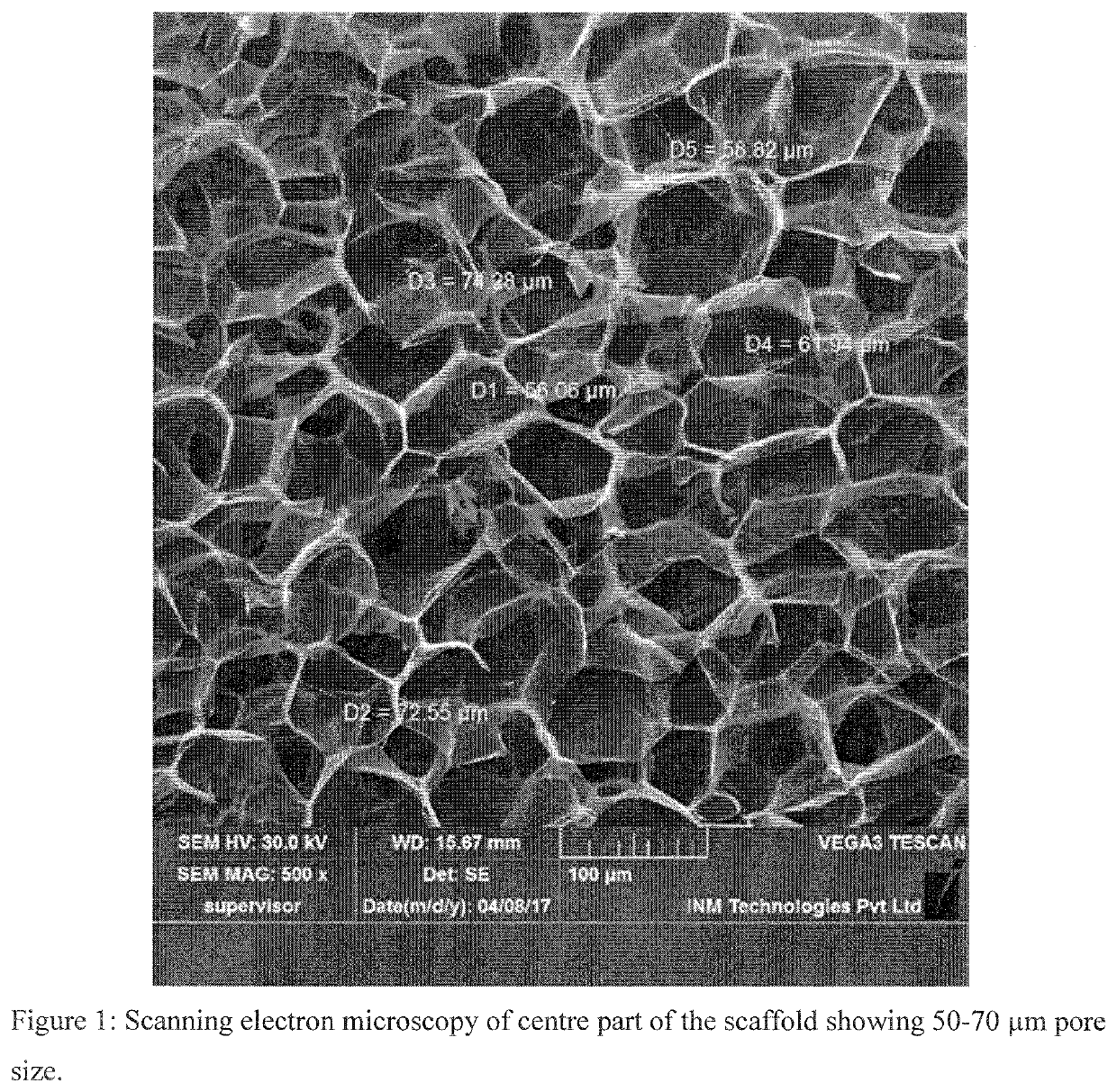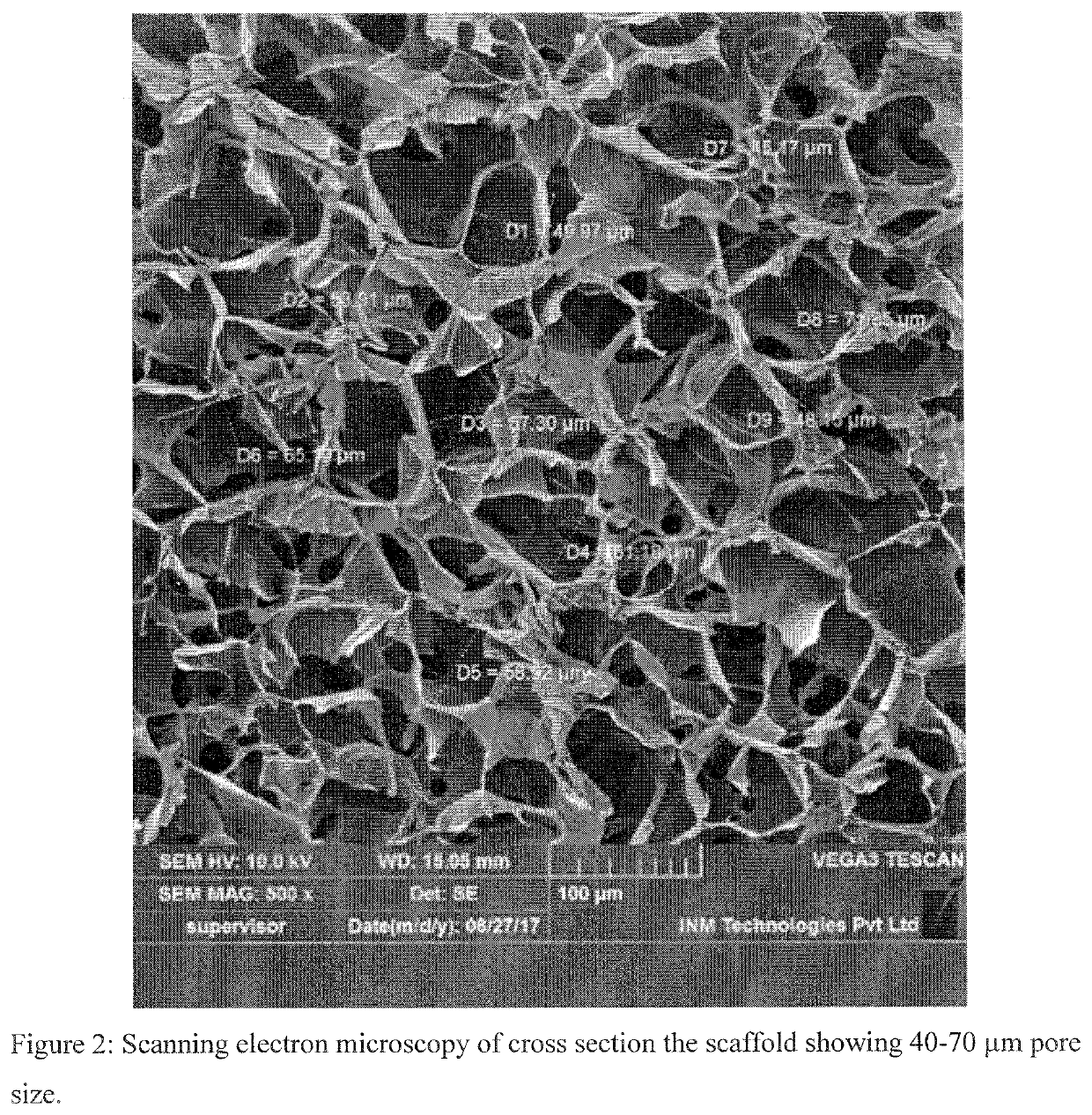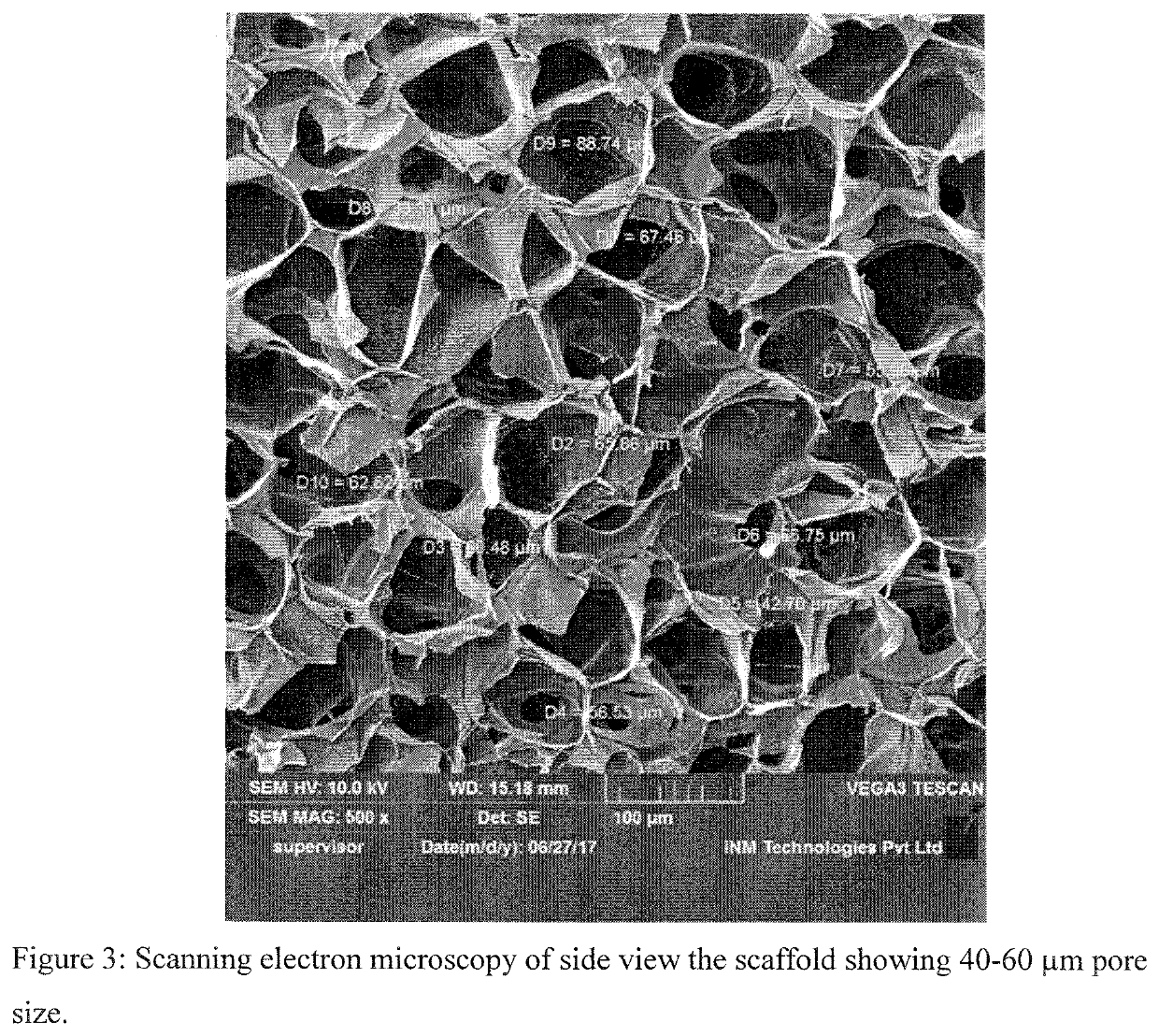Scaffold compositions for tissue repair
a scaffold composition and tissue technology, applied in the field of hemostatic scaffold compositions, can solve the problems of affecting the inability to use severe wounds and wounds, and the death caused by bleeding out is a particular problem, so as to avoid the use of heat, improve bleeding, fluid seepage or weeping, and maintain the structural integrity of the biomaterial.
- Summary
- Abstract
- Description
- Claims
- Application Information
AI Technical Summary
Benefits of technology
Problems solved by technology
Method used
Image
Examples
example 1
ons and Preparation of Dental Scaffolds
[0090]2 gms of chitosan was dispersed in 97.4 gms of 0.5% w / v of acetic acid solution in water and stirred continuously until chitosan is dissolved / dispersed. While the aqueous chitosan solution / suspension was being stirred, 0.5 gms of tranexamic acid, was dissolved / dispersed into it. This was followed by the addition of 0.1 gm of nano dicalcium silicate. The suspension / solution was stirred. The resultant suspension / solution was further subjected to lyophilization process. The resultant lyophilized scaffold can be cut to different sizes and / or shapes, as desired. For example, a scaffold of diameter 2.2 cm and thickness of 0.4 cm, weighs 0.03 gm.
example 2
Time of the Blood, Comparison of the Present Invention, with the Other Compositions
[0091]
TABLE 1Dental Scaffold compositionsClotting timeControl (only blood)7 min 11 secChitosan scaffold composition6 minChitosan + nano dicalcium silicate (0.1%)5 min 26 secscaffold compositionChitosan + Tranexamic acid (0.5%) scaffold5 mincompositionChitosan + Tranexamic acid + nano dicalcium1 min 03 secsilicate dental scaffold composition as perexample-1
From the table-1; dental compositions of the present invention prepared as per the example-1 has the less clotting time of blood when compared to the other compositions.
example 3
ons and Preparation of Scaffolds for External Wounds
[0092]2 gms of chitosan was dissolved / dispersed in 97.4 gms of 0.5% w / v of acetic acid solution in water and stirred continuously until chitosan is dissolved / dispersed. While the aqueous chitosan solution / suspension was being stirred, 0.5 gms of tranexamic acid, was dissolved / dispersed into it. This was followed by the addition of 0.1 gm of nano dicalcium silicate. The suspension / solution was stirred. The resultant suspension / solution was further subjected to lyophilization process. The resultant lyophilized scaffold can be cut to different sizes and / or shapes, as desired. For example, a scaffold of diameter of 6.5 cm and thickness of 1.2 cm, weighs at 1 gm. The scaffold as cut is then sterilized. Dimensions of the scaffold could be of any size and shape based on the need.
PUM
| Property | Measurement | Unit |
|---|---|---|
| particle size | aaaaa | aaaaa |
| pore size | aaaaa | aaaaa |
| temperatures | aaaaa | aaaaa |
Abstract
Description
Claims
Application Information
 Login to View More
Login to View More - R&D
- Intellectual Property
- Life Sciences
- Materials
- Tech Scout
- Unparalleled Data Quality
- Higher Quality Content
- 60% Fewer Hallucinations
Browse by: Latest US Patents, China's latest patents, Technical Efficacy Thesaurus, Application Domain, Technology Topic, Popular Technical Reports.
© 2025 PatSnap. All rights reserved.Legal|Privacy policy|Modern Slavery Act Transparency Statement|Sitemap|About US| Contact US: help@patsnap.com



